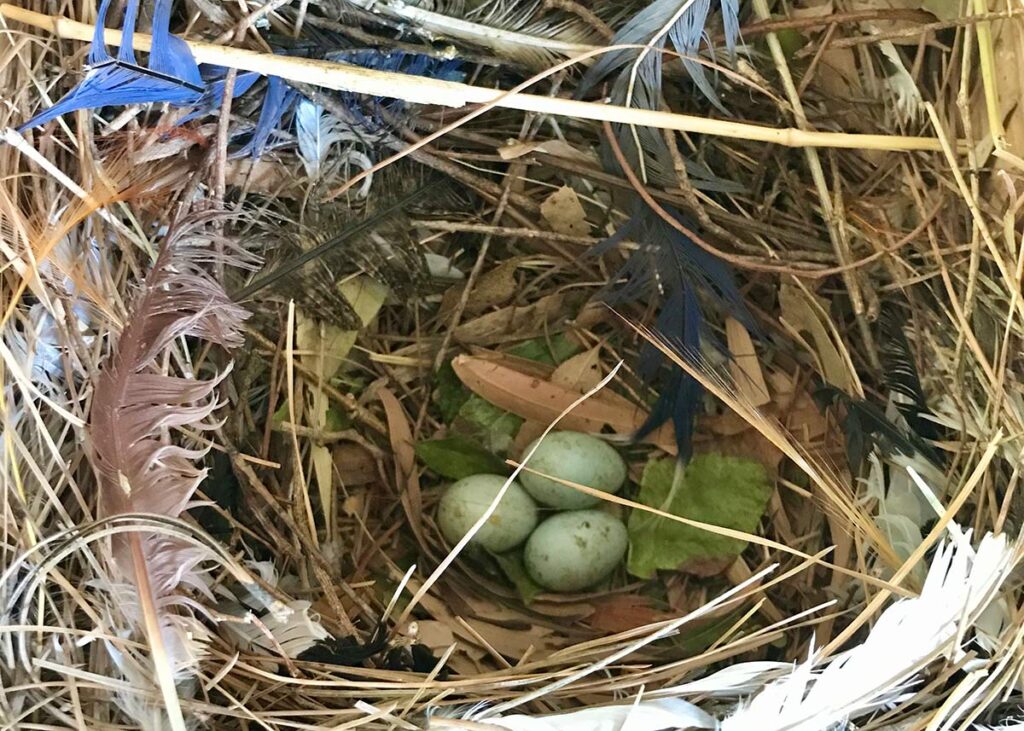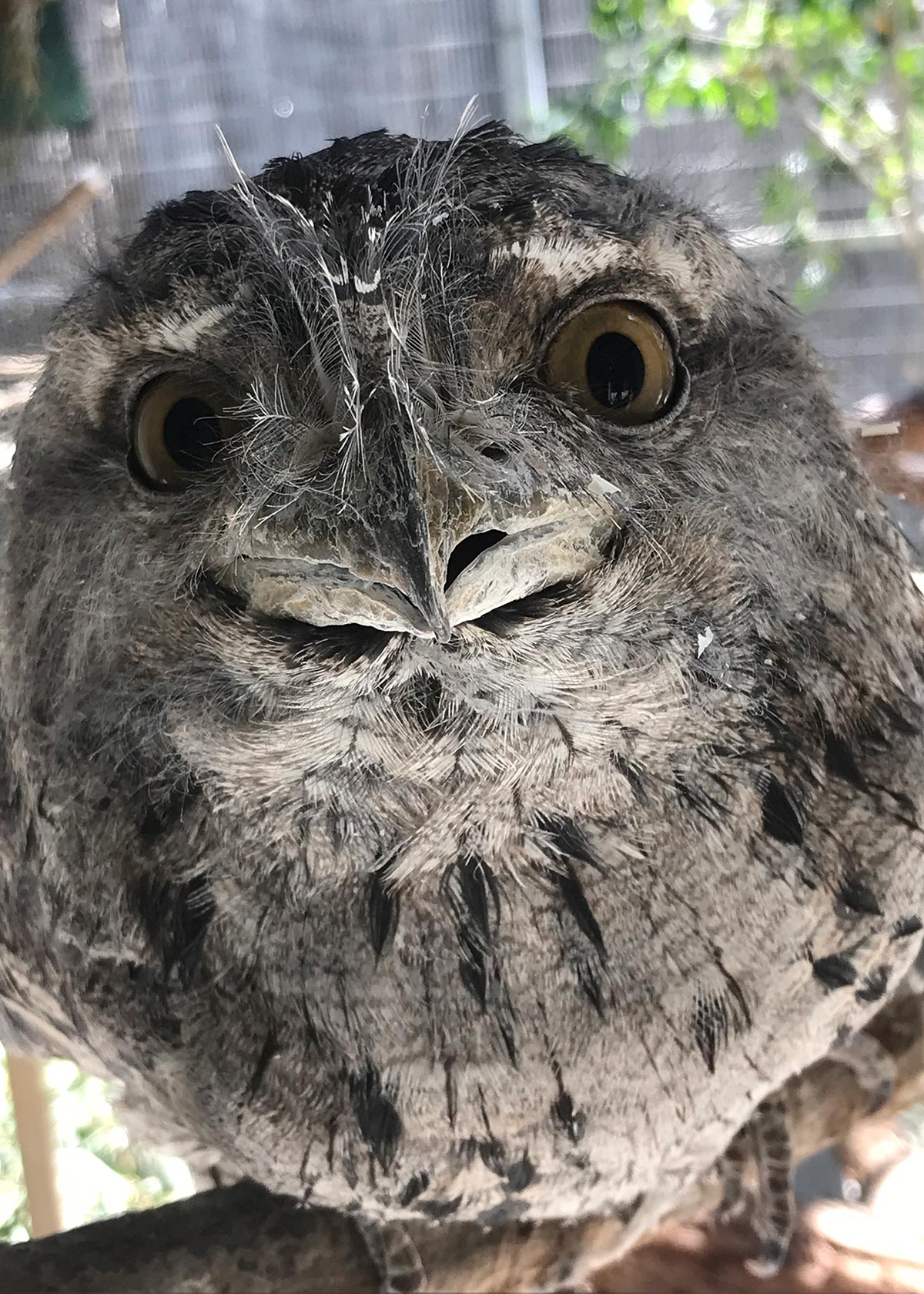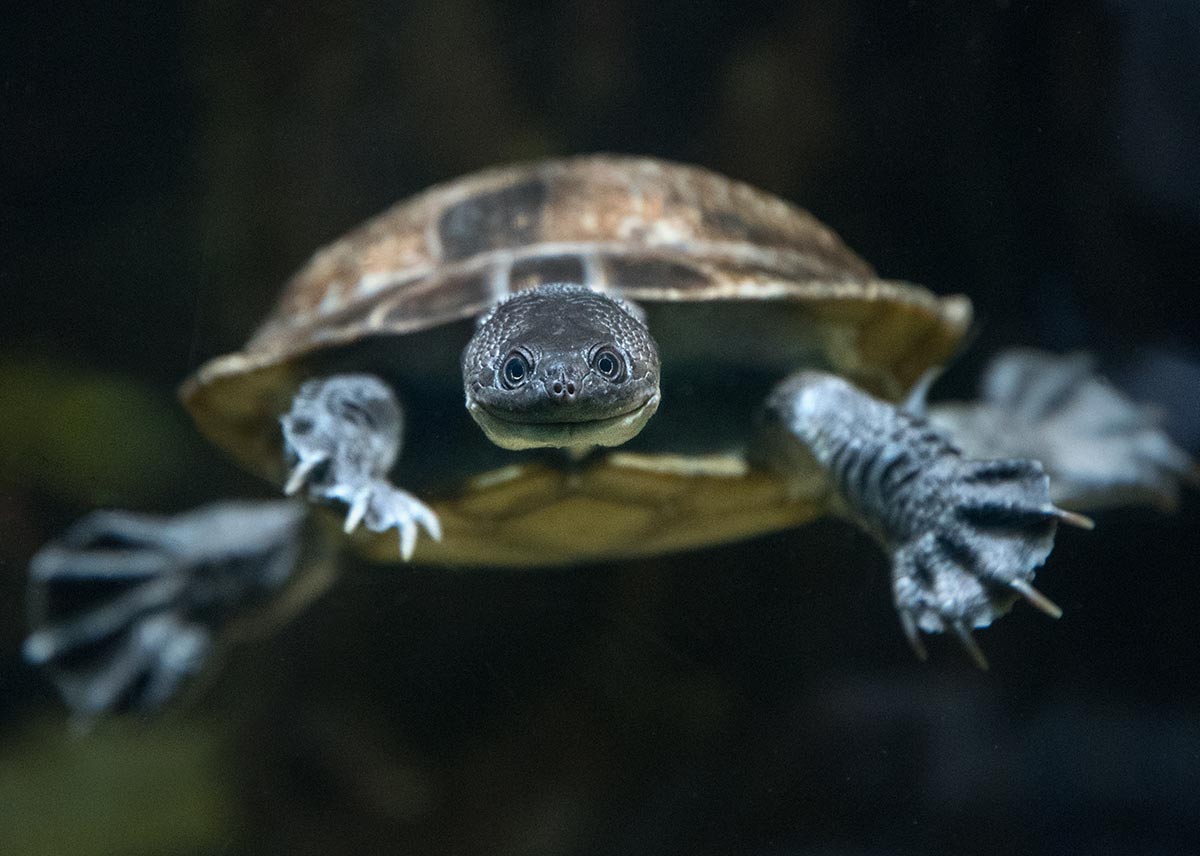
Both of our breeding pairs of critically endangered Bali mynahs (Leucopsar rothschildi) have laid eggs. It sometimes takes multiple clutches for pairs to be successful at chick rearing and we are hopeful that the quiet atmosphere of the Avian Conservation Center (ACC), which is not accessible to guests, will allow these pairs to develop successful strategies.
When the Zoo first opened at its current location in 1966, it acquired its first pair of Bali mynahs (also known as Bali starlings) as a donation. With the arrival of several additional individuals in the early 1970s, our breeding program began. Between 1972 and 1987, some 42 chicks were hatched. In 2001, three hatches took place, and four in 2002. The most recent hatches (two female chicks) took place in 2006. Currently, 47 institutions in North America house this species. In 2016, Animal Keeper Lori Rogalski, one of the ACC caretakers, traveled to Bali to participate in a Bali starling conservation project. Her goal was to lend her skills to the project and to gain insights that might enhance the Zoo’s efforts to breed this species.
A red-and-yellow barbet (Trachyphonus erythrocephalus) chick hatched on June 17. This species, one of about 80 in the family Capitonidae, is native to eastern Africa and lives in small groups of three to 10 birds. Barbets are named for the bristles at the bases of their stout, sharp bills. The white-headed buffalo weavers (Dinemellia dinemelli) who reside in the ACC are working hard on the finishing touches inside of their nest and female bird of paradise (Paradisaea raggiana) Esmeralda is showing interest in male Gaston again, so they will be re-introduced. A total of four Von der Decken’s hornbill (Tockus deckeni) chicks are now out of their nest box. Two blue-billed curassow (Crax alberti) chicks hatched in June. This critically endangered species once ranged widely throughout northern Colombia. Today, these birds are found only in fragmented tropical lowland forest areas.

On July 23, three meerkat (Suricata suricatta) pups emerged from their underground den. Meerkats are born underground and are blind, deaf, and hairless. At four weeks old, they are mature enough to venture out of the den for the first time. Since making their above-ground debut, the new meerkat pups have been observed exploring their habitat, playing together, and nursing on mom.

A female tawny frogmouth (Podargus strigoides) arrived from the Tulsa Zoo recently. These birds are native to Australia, including Tasmania, and superficially resemble owls, though they are more closely related to nightjars and whip-poor-wills. Mottled coloration helps them blend in with tree bark and leaves where they rest during the day, and, like owls, they have large eyes that help them hunt at night. Specialized flight feathers allow them to fly silently. At the Zoo, tawny frogmouths live in the ACC.

Some 15 fertile Roti Island snake-necked turtle (Chelodina mccordi) eggs are being cared for by herpetology staff. These unusual turtles are now extinct in the wild, so it is anticipated that these offspring may eventually be released into the species’ natural habitat in Indonesia. The Zoo is working with the Bronx Zoo’s Wildlife Conservation Society (WCS), which is leading this project.

The herpetology department received a group of about 130 mountain yellow-legged frog (Rana muscosa) tadpoles that were wild collected by USGS as a rescue situation following the Bobcat Fire in the San Gabriel Mountains. The Zoo will care for these tadpoles until they can be returned to the wild, when and if sufficient water is present and mudslides are not a huge concern.


